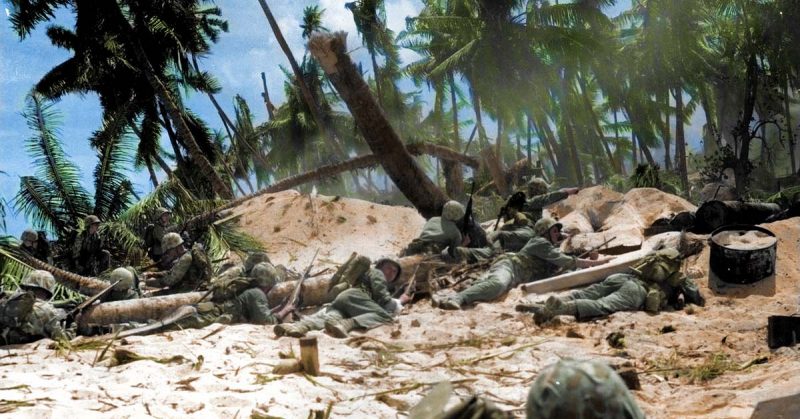Incredible colorised photos showing the lengths American soldiers went to to capture several Pacific Islands from the Japanese during the Second World War have been published today, on the anniversary of the US’s drive across the region.
Images from America’s successful assault and capture of the Tarawa Atoll in November 1943 show troops trudging through the ocean in full kit as they make their way toward shore, while another sees a group of soldiers taking cover behind a tank.
Further pictures, restored by colouriser Royston Leonard, show a soldier crouching down next to the tanks of a track to give a small kitten who was hiding nearby a drink of water, with further pictures showing American troops holding their rifles after capturing several Japanese prisoners.
The Gilbert and Marshall Islands campaign, of which the battle of Tarawa was a large part, was the name given to a series of battles which took place between America and Japan across the Pacific between November 1943 and February 1944.
The assault on the Tarawa Atoll by the Americans was the first offensive they undertook in the Pacific region, capturing the islands after three days of intense fighting between November 20 and November 23.
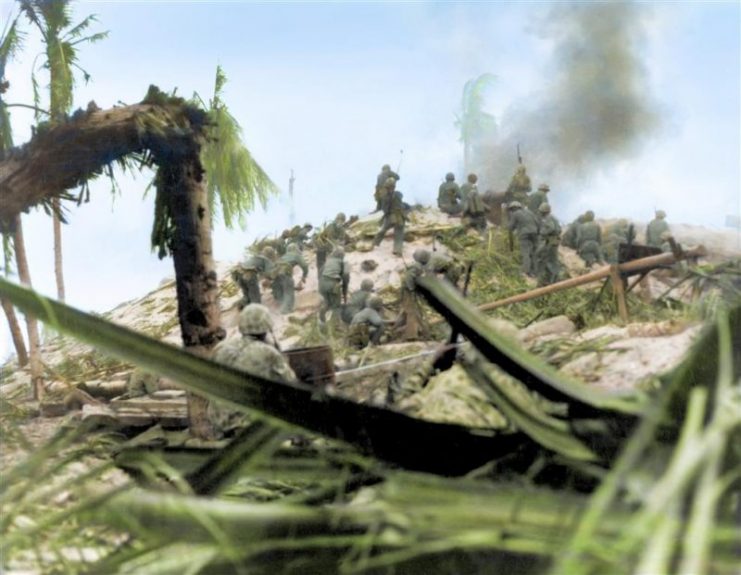
Tarawa was actually one of the less heavily defended islands the US attacked that year, with a tactical ploy by the leadership ensuring that the Japanese stationed far more men at other islands in the area.
Knowing this, the Americans targeted the islands with air strikes, artillery and a land invasion, making significant gains and forcing the Japanese from the islands one by one as they made their way across the area. It was not without loss, though, with the Japanese dogged in their fighting.
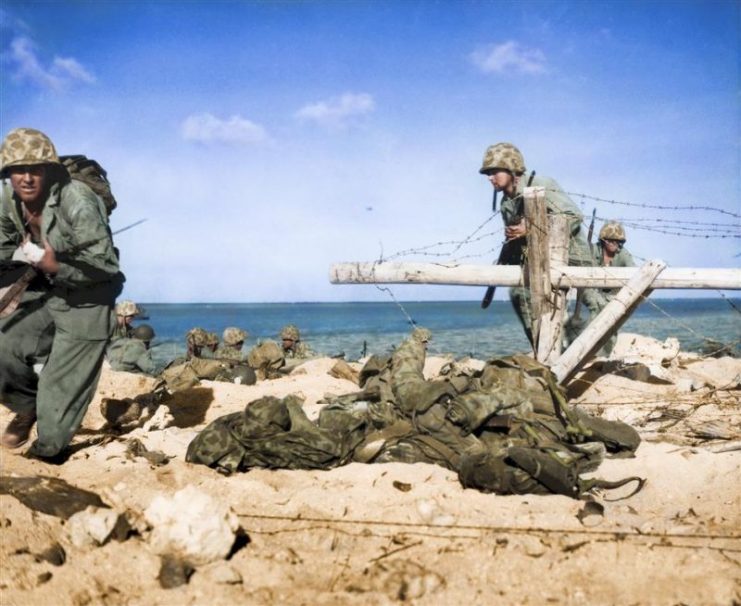
They fought almost to the last men, with just one officer and 16 troops of the 3,500 plus enlisted men surrendering. Of the 1,200 Korean labourers forced to help erect defences on the islands, only 129 survived. America also paid a heavy price for their victory, too, with over a thousand killed and two thousand wounded.
“These images show the moments in time when madness took over the world,” Royston, a 55-year-old Electrician from Cardiff, said.
“Tarawa is the place that Marines learned the hard lessons that would help them later in the war.
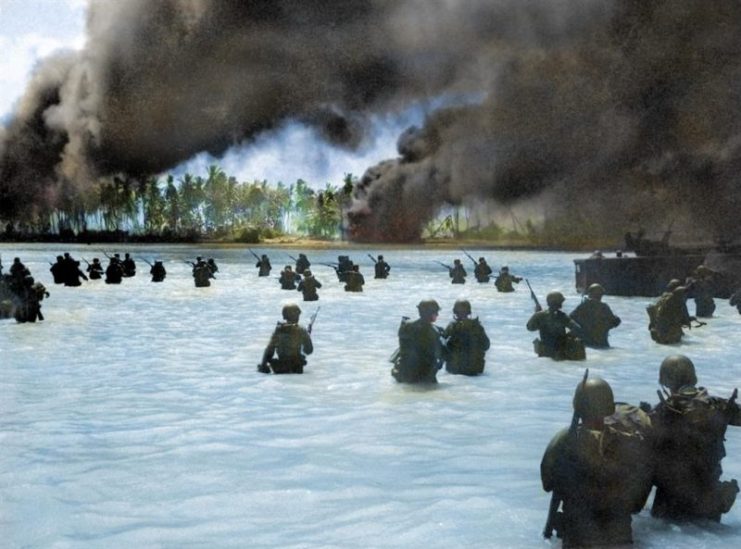
“America knew that the cost in lives of every island was going to be high, but I don’t think they quite expected this. And it only rose more as they got closer to mainland Japan.
“Battles like this serve as a reminder to the world that something like this should never happen again.
“At the same time, though, images like the marine feeding the cat shows that there can be hope even in the hell of battle.”
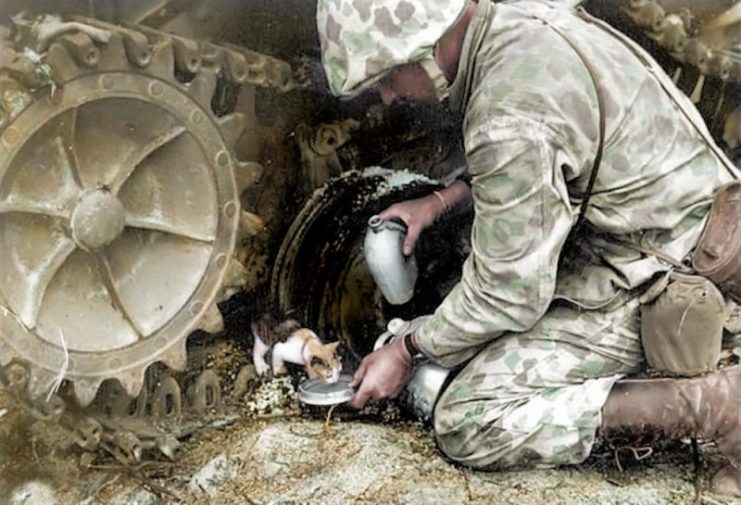
Michael D. Carroll is a journalist and author with a particular interest in historical photography.
From his base in Birmingham, UK he directs bespoke press agency mediadrumworld.com, and through his work at the agency, Michael came into contact with the thriving community of colourisors of historical images.
After placing several colourised history features into the national newspapers in the UK, he enlisted the support of this community to publish Retrographic, the first book to present a specially curated selection of iconic historical images in living colour.
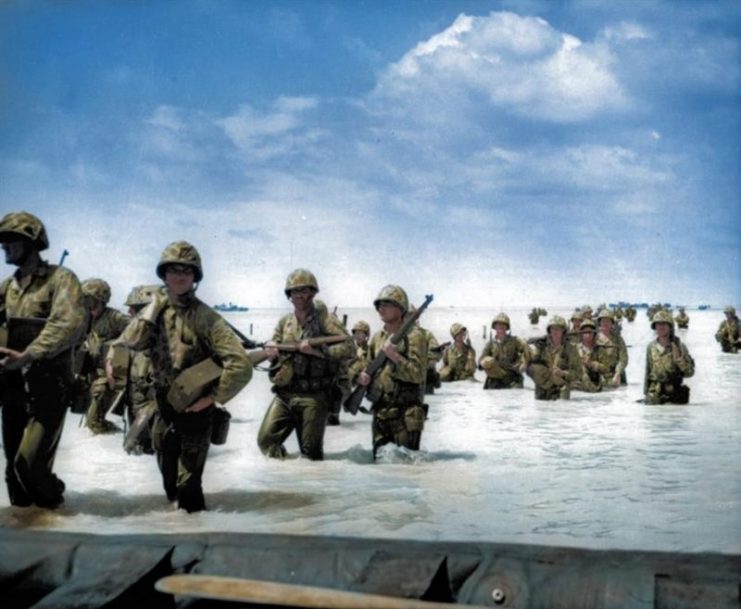
With the support of ambassadors from the world’s first society for photographers, the Royal Photographic Society, UK, images and reviews on Retrographic have been featured in newspapers and online zines, including the Daily Mail, Telegraph, Times, Fstoppers, War History Online, and ePHOTOzine.
The book has recently been taken into the private collection of London’s prestigious Victoria and Albert Museum, in recognition of its contribution to the history of photography.
More information on Amazon.
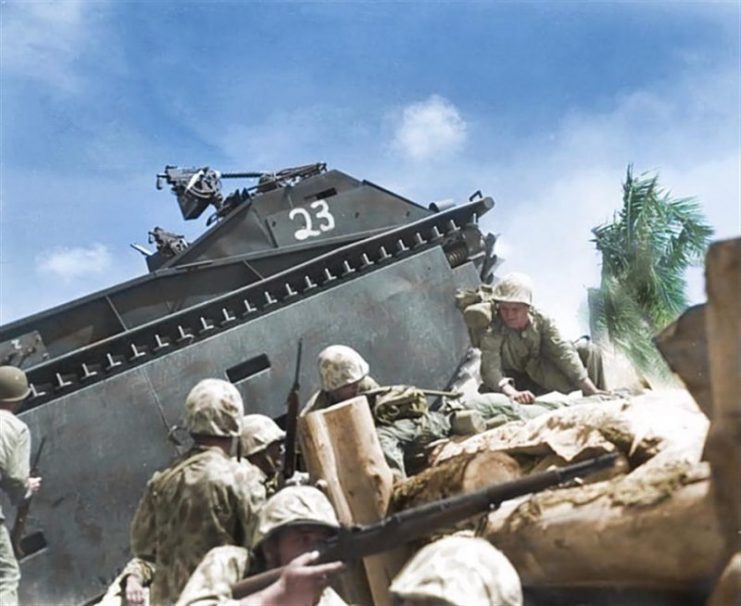
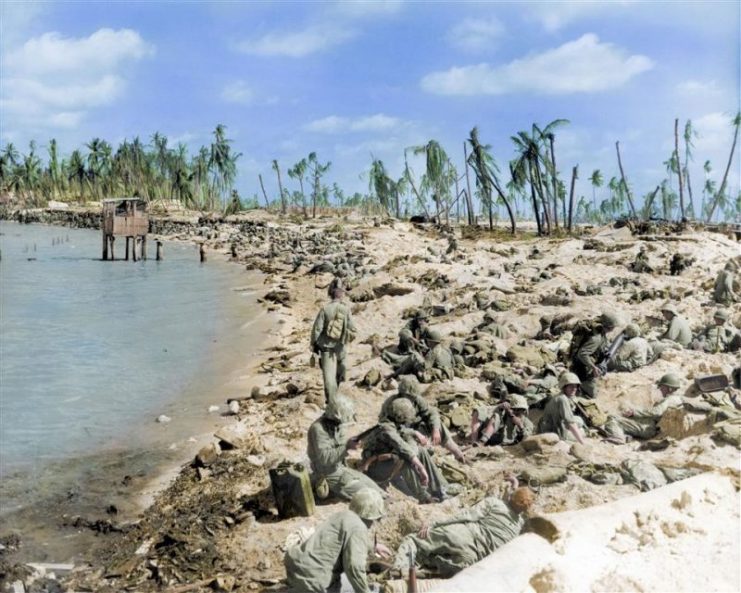
https://www.youtube.com/watch?v=dvvZZVPrkdY
